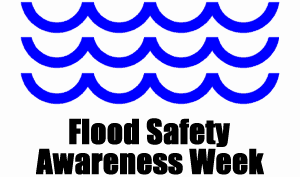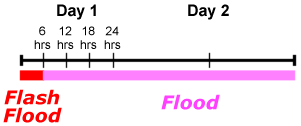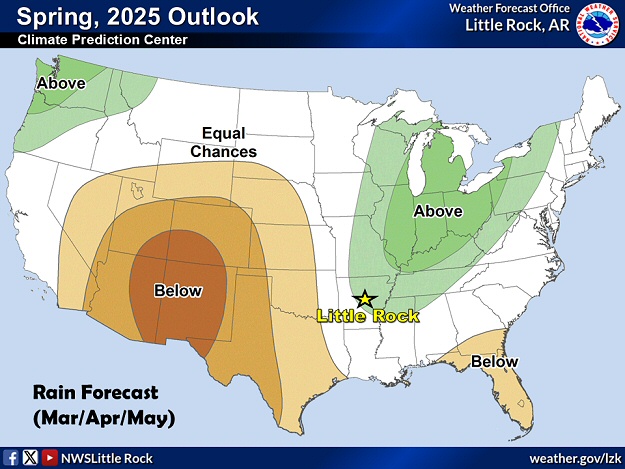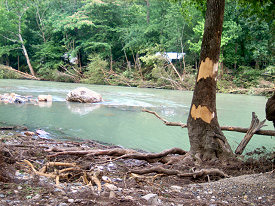 |
| |
| March 23 - 29, 2025 |
|
|
Many of us fear tornadoes and lightning, but what about water? It seems harmless since we drink water...swim and bathe in it. So why does water kill 80 to 90 people (30 year average) annually in this country? Because the power of water is underestimated. |
| In the picture: Weather fatalities (based on a 30 year average from 1994 to 2023) in the United States (courtesy of NOAA). |
| Water becomes deadly when flooding/flash flooding occur (during or shortly following a heavy rain event). |
 |
|
Some definitions...
Flash Flood: Usually occurs within 6 hours. The rate of rainfall exceeds the rate of runoff (rain falls faster than it can be carried away). Because water has nowhere to go, it covers roads and fills small streams and creeks.
Flood: Usually takes longer than 6 hours to unfold and can last for several days. Water from a flash flood event (or long-term heavy rain event) eventually makes its way into rivers...with excess water flowing into nearby towns, fields, etc.
|
| Flood Fatalities in Arkansas |
| Since 2010 (through 2024), there were 76 flood fatalities in Arkansas. This was the sixth most across the country during this time frame. Many of these deaths (41 lives lost) occurred in 2010 and 2011. |
 |
| Spring Precipitation Outlook | Spring Flood Outlook |
| In the pictures: The spring outlook from the Climate Prediction Center is leaning toward wetter than normal conditions from the Ohio Valley into Arkansas. In response to this, there is a 50 percent probability of at least minor flooding along portions of the Black, Cache, and White Rivers in eastern sections of the state. |
|
| |
|
Above average precipitation is in the forecast during the spring (March through May) from the Great Lakes and Ohio Valley into Arkansas. This will likely lead to periodic flash flooding/elevated rivers in places.
|
| Number of Flood/Flash Flood Fatalities (2010-2024) |
| State |
Deaths |
| Texas |
245 |
| North Carolina |
148 |
| Kentucky |
107 |
| Missouri |
84 |
| Tennessee |
86 |
| Arkansas |
76 |
|
In 2024, there were two flash flood fatalities in May. On the 26th, Excessive rain caused Sugar Creek to rise rapidly. A 59-year-old man kayaking along the creek lost control and drowned. A 61-year-old woman was also in the creek, and her body was found downstream.
|
 |
Nationwide, statistics show that more than 50% of flood/flash flood related deaths occur in automobiles. The next highest percentage of high water drownings are people walking into flooded areas (usually near swift current where they can be swept away).
If flood waters are between you and your destination, the National Weather Service wants you to remember a simple slogan: "Turn Around Don't Drown" TM.
|
| This page was designed to increase public awareness about high water and its dangers. Education is the key to understanding high water and to avoid becoming a statistic. |
 |
| In the picture: Six to eight inches of rain rain caused the Little Missouri River to climb 20 feet in a just a few hours at the Albert Pike Recreation Area (Montgomery County) during the early morning hours of 06/11/2010. Twenty people drowned, making this the deadliest flood event in Arkansas recorded history. Click to enlarge. |
| Flood Safety Awareness Week, 2024 Slides |
|
|
 |
For more on flood safety... there is a very useful website available. To go to the website, click here. |
|
|